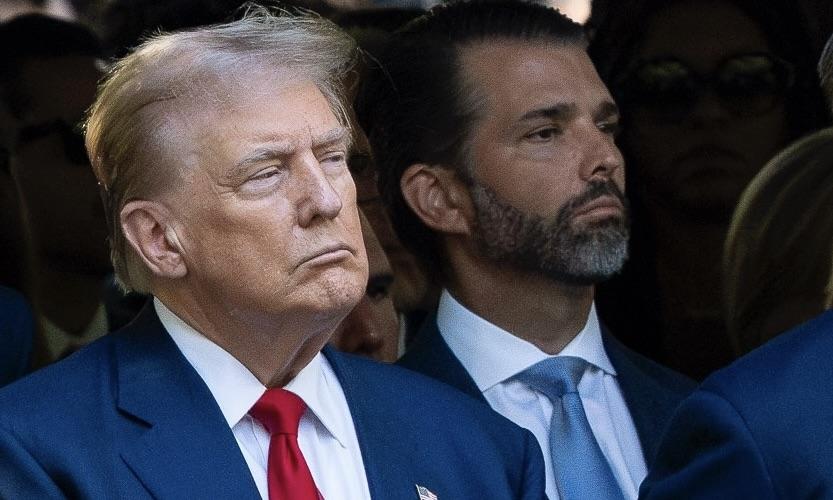Former President Donald Trump, returning to the political spotlight, has unveiled a comprehensive plan to combat childhood hunger in the United States. As part of his 2025 agenda, the initiative aims to provide significant food assistance, improve school meal programs, and address food deserts in underserved areas. While the proposal has garnered praise for its ambition, critics question its feasibility and long-term impact.
A Comprehensive Approach to Childhood Hunger
Trump’s plan, announced during a policy briefing in Washington, includes expanding federal food assistance programs like the Supplemental Nutrition Assistance Program (SNAP) and the National School Lunch Program. Additionally, the strategy seeks to incentivize local governments and private organizations to open grocery stores in food deserts, ensuring children in low-income areas have access to nutritious meals.
The program also prioritizes breakfast and lunch programs in schools, with proposals to offer year-round meals to students in need. Trump emphasized that "no child in America should go to bed hungry," positioning the plan as a cornerstone of his broader domestic policy agenda.
Criticism and Controversy Surrounding Funding
Despite its ambitious goals, Trump’s plan has faced skepticism over funding. Critics argue that the federal budget may not support the proposed expansions without significant cuts to other programs. Nonprofit organizations and economists have also expressed concerns about the plan’s reliance on public-private partnerships, questioning whether private entities will effectively meet the program’s demands.
Opposition voices have also pointed out that Trump’s proposal lacks clear details on how it would address systemic issues contributing to childhood hunger, such as income inequality and housing instability. Advocacy groups have urged policymakers to ensure the plan incorporates these critical factors.
Online Reactions Spark Heated Debates
Social media users have weighed in on Trump’s plan:
- @PolicyPundit: "Finally, a bold move on childhood hunger. Let’s see if it’s all talk or real action."
- @CriticWatcher: "Sounds good, but where’s the funding? Another empty promise in the making? #ChildHungerPolicy."
- @HealthyKidsNow: "Expanding SNAP is critical. But why didn’t this happen during his first term? #FoodInsecurityMatters."
- @HopeForKids2025: "If this works, it could change lives. Let’s focus on bipartisan solutions instead of criticism. #EndChildHunger."
- @DataDrivenNow: "Where are the numbers to back this up? Skepticism is warranted. #ChildhoodHunger."
- @ProgressiveParents: "Great start, but what about addressing root causes like poverty and housing? #ComprehensiveSolutionsNeeded."
Conclusion
While Trump’s plan to address childhood hunger presents an ambitious vision, its success will depend on funding, bipartisan support, and tackling systemic issues. As debates continue, the nation awaits concrete steps to transform this vision into reality.



 U.S.-Russia Talks Leave Ukraine Peace Efforts Uncertain
U.S.-Russia Talks Leave Ukraine Peace Efforts Uncertain  U.S. Soybean Shipments to China Gain Momentum as Trade Tensions Ease
U.S. Soybean Shipments to China Gain Momentum as Trade Tensions Ease  Federal Judge Blocks Trump Administration’s Medicaid Funding Restrictions Targeting Planned Parenthood
Federal Judge Blocks Trump Administration’s Medicaid Funding Restrictions Targeting Planned Parenthood  Michael Dell Pledges $6.25 Billion to Boost Children’s Investment Accounts Under Trump Initiative
Michael Dell Pledges $6.25 Billion to Boost Children’s Investment Accounts Under Trump Initiative  Trump Warns Drug-Trafficking Nations as Colombia’s Petro Issues Strong Rebuttal
Trump Warns Drug-Trafficking Nations as Colombia’s Petro Issues Strong Rebuttal  Trump Administration Tightens H-1B Visa Vetting With New Focus on Free Speech and Censorship
Trump Administration Tightens H-1B Visa Vetting With New Focus on Free Speech and Censorship  Trump Claims He Will Void Biden Documents Signed with Autopen
Trump Claims He Will Void Biden Documents Signed with Autopen  IMF Deputy Dan Katz Visits China as Key Economic Review Nears
IMF Deputy Dan Katz Visits China as Key Economic Review Nears  Trump Administration Halts Immigration, Green Card, and Citizenship Processing for 19 Countries
Trump Administration Halts Immigration, Green Card, and Citizenship Processing for 19 Countries  Pentagon Probe Finds Hegseth’s Use of Signal Risked Exposing Sensitive Yemen Strike Details
Pentagon Probe Finds Hegseth’s Use of Signal Risked Exposing Sensitive Yemen Strike Details  Trump Pardons Former Honduran President Juan Orlando Hernández in Controversial Move
Trump Pardons Former Honduran President Juan Orlando Hernández in Controversial Move  UN Chief Says Gaza Operation “Fundamentally Wrong” as Concerns Over War Crimes Grow
UN Chief Says Gaza Operation “Fundamentally Wrong” as Concerns Over War Crimes Grow  U.S. Defense Chief Pete Hegseth Defends Controversial Second Strike on Suspected Drug-Smuggling Vessel
U.S. Defense Chief Pete Hegseth Defends Controversial Second Strike on Suspected Drug-Smuggling Vessel  China Urged to Prioritize Economy Over Territorial Ambitions, Says Taiwan’s President Lai
China Urged to Prioritize Economy Over Territorial Ambitions, Says Taiwan’s President Lai  Trump Administration Plans Major Rollback of Biden-Era Fuel Economy Standards
Trump Administration Plans Major Rollback of Biden-Era Fuel Economy Standards  UN General Assembly Demands Russia Return Ukrainian Children Amid Ongoing Conflict
UN General Assembly Demands Russia Return Ukrainian Children Amid Ongoing Conflict  Taiwan Signals Openness to Renew Ties with Honduras as Election Unfolds
Taiwan Signals Openness to Renew Ties with Honduras as Election Unfolds 




























